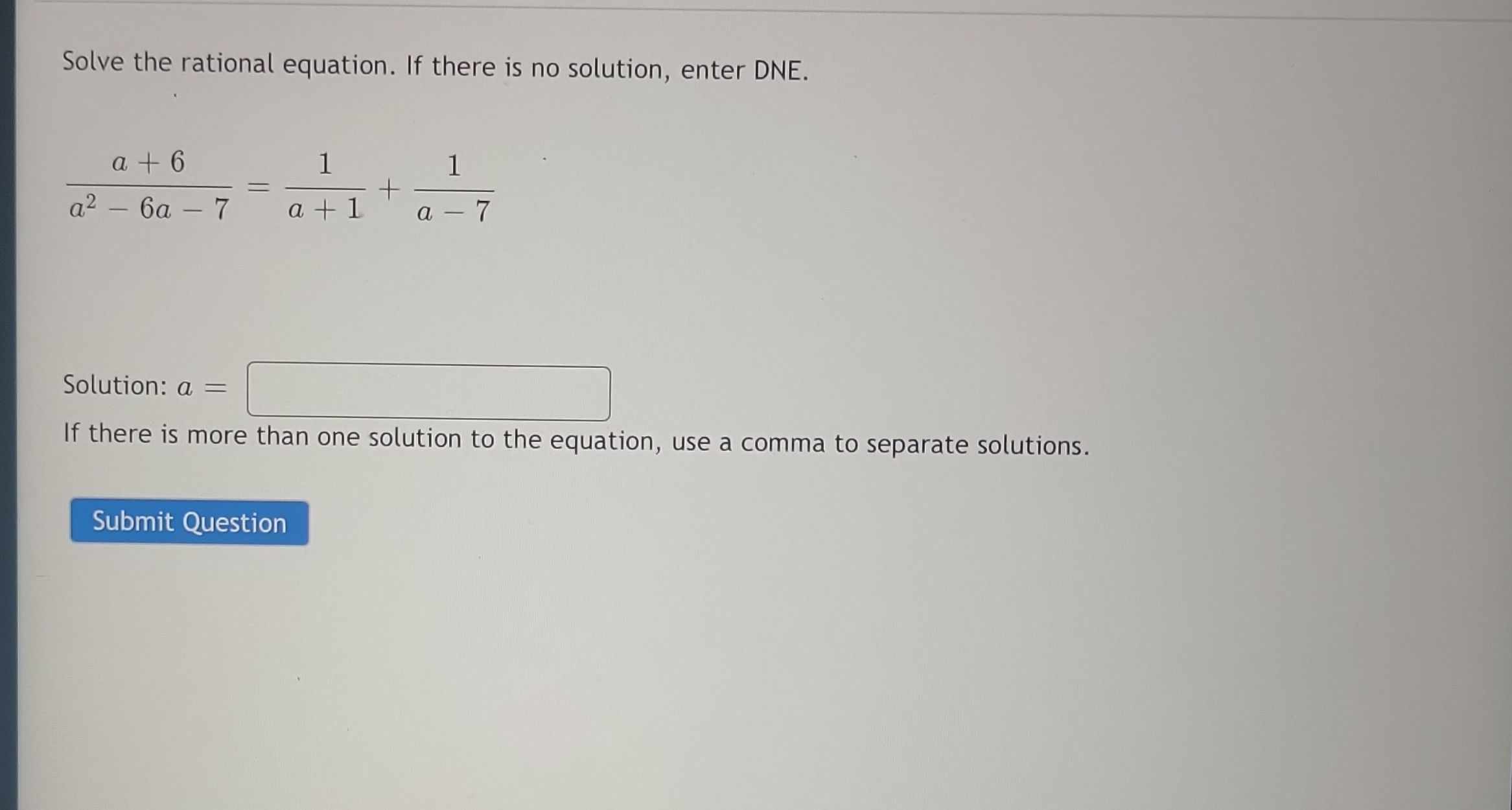Full solution
Q. Solve the rational equation. If there is no solution, enter DNE.Solution: If there is more than one solution to the equation, use a comma to separate solutions.
- Identify Common Denominator: First, identify the common denominator for the rational equation. The denominators are , , and . Factoring the quadratic denominator gives us . Thus, the common denominator is .
- Express Fractions: Next, express each fraction with the common denominator. This means we multiply the numerator and denominator of each fraction by whatever is missing from the common denominator.For the first fraction, we already have the common denominator, so it remains .For the second fraction, we multiply the numerator and denominator by to get .For the third fraction, we multiply the numerator and denominator by to get .
- Write Equation: Now, write the equation with the common denominator:
- Combine Fractions: Combine the fractions on the right side of the equation: .
- Simplify Numerator: Simplify the numerator on the right side of the equation: .
- Set Numerators Equal: Since the denominators are the same, we can set the numerators equal to each other: .
- Solve for 'a': Solve for 'a' by subtracting 'a' from both sides:,which simplifies to:.
- Check for Extraneous Solutions: Add to both sides to isolate '':which simplifies to:
- Check for Extraneous Solutions: Add to both sides to isolate '':which simplifies to:Check for extraneous solutions by substituting '' back into the original denominators to ensure they do not equal zero:For : ,For : .Since neither denominator is zero, '' is a valid solution.

